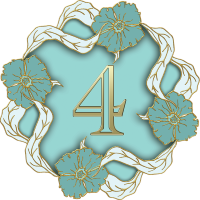Rosh Hashanah – the Jewish New Year – is on its way, and it’s time to start preparing for one of the biggest events in the Jewish calendar!

Did you know that Rosh Hashanah is such a big day that it actually has four different names? Here’s what they are and what they mean:
Rosh Hashanah
Rosh Hashanah literally means “Head of the Year”. The name first appears in the Mishnah which dates it to the 2nd century CE. This popular name has inspired lots of the symbols associated with the holiday. For example, some people have the custom of putting a fish’s or sheep’s head on the table to symbolize the “head” of the year.
Yom HaZikaron

This literally translates as Day of Remembrance, so be careful not to confuse it with Israel’s national Memorial Day! This name is most popular in Hebrew liturgy (and appears most in the machzor, the prayer book especially written for this holy day). It refers to the time we spend in synagogue recalling the previous year and preparing for the year ahead.
Yom HaDin
Yom HaDin translates to mean the Day of Judgement and refers to the image of God sitting on a throne with two infamous books that determine the fate of every Jew in the upcoming year: the Book of Life and the Book of Death. Anyone who isn’t immediately written into the Book of Life has 10 days – from Rosh Hashanah to Yom Kippur – to atone and add their name to God’s life list before it’s sealed.
Yom Teruah
This name – which literally means a Day of Blowing – first app ears in the Torah and is the reason for the shofar blasts sounded throughout the day’s prayer services. Hearing the shofar is one of Rosh Hashanah’s most important commands, and there is a special pattern of 100 separate notes blown during the day.
ears in the Torah and is the reason for the shofar blasts sounded throughout the day’s prayer services. Hearing the shofar is one of Rosh Hashanah’s most important commands, and there is a special pattern of 100 separate notes blown during the day.












